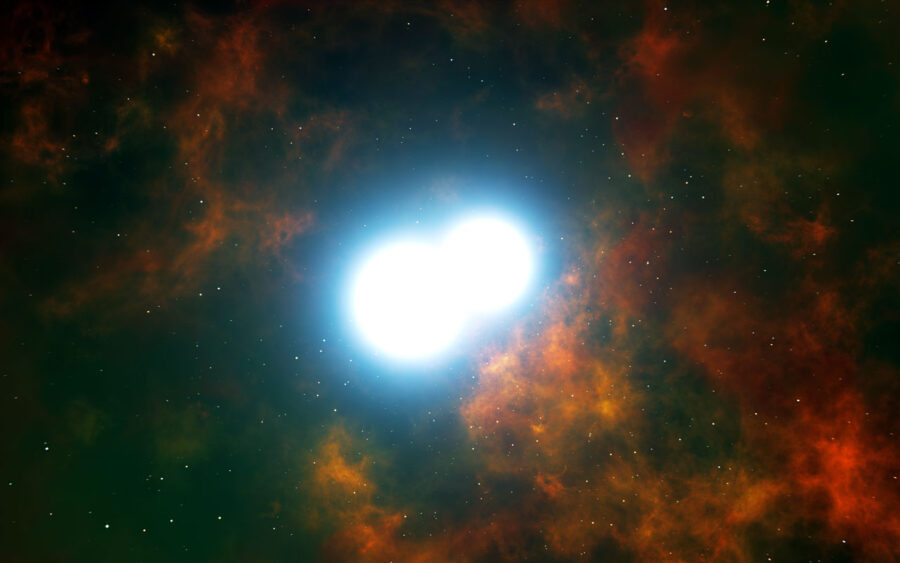Scientists Find Two Stars So Close The System Fits In Our Sun

A recent report by The Open Journal of Astrophysics reveals the discovery of two unique stars operating in a binary system. What’s most baffling about this binary system is that the stars could comfortably fit inside of our own sun with room to spare, according to scientists. This binary system includes a brown dwarf orbiting a red dwarf, and boasts an orbital period of 1.9 hours.
The brown dwarf has a shorter commute around its parent star than some of us have to the office. This peculiar binary system can be found 457 light years from Earth, and was discovered by the Zwicky Transient Facility located at the Palomar Observatory in California.
It’s worth noting that brown dwarfs aren’t technically considered full-blown stars, but rather sub-stellar objects, or “failed stars.”
This observatory specializes in detecting transient objects like supernovae, gamma ray bursts, comets and asteroids, and in this case, a binary system that some scientists suggest shouldn’t exist when you consider its size.
While scientists could have given this truly unique binary system a memorable name like “the bite-sized binary brothers,” they opted for to call it ZTF J2020+5033, which doesn’t roll off one’s tongue quite as well, but sounds impressive, to say the least.
What’s even more unique about this discovery is that the both stars are outliers in their own right. The brown dwarf is of a particularly high mass compared to other brown dwarfs, boasting a similar radius to planet Jupiter while weighing in at over 80 times its mass, which has some pretty stunning implications.
It’s worth noting that brown dwarfs aren’t technically considered full-blown stars, but rather sub-stellar objects, or “failed stars.” Brown dwarfs are too massive to be considered planets, but not massive enough for hydrogen atoms to sustain fusion, which would classify them as a star. Brown dwarfs are basically caught in the middle of an ongoing identity crisis, and therefore fall into their own category even though they’re often referred to as stars.
While scientists could have given this truly unique binary system a memorable name like “the bite-sized binary brothers,” they opted for to call it ZTF J2020+5033…
But in the case of ZTF J2020+5033, the brown dwarf is hovering right around the mass cutoff to be able to sustain fusion. Meaning, if it were to somehow pick up more mass, it could eventually be classified as a star after all.

The red dwarf star is also unique in the sense that it’s much smaller than average, with a radius that’s only 17.6 percent the size of our own sun. Average sized red dwarf stars are nearly triple the size.
Scientists speculate that both stars in this system were not only much larger on an earlier timeline, but also had a much wider orbit. The current research suggests that their respective orbits have shrunk by a factor of five, and both masses will continue to shrink until one of the stars consumes the other through a process known as magnetic braking.
The brown dwarf has a shorter commute around its parent star than some of us have to the office.
As the science dictates, the more massive of the two stars will eventually consume the smaller star with its gravitational pull.
Though more research still needs to be conducted, it’s not outside the realm of possibility that the two stars that make up ZTF J2020+5033 will eventually become one, but it’s still too soon to tell.











